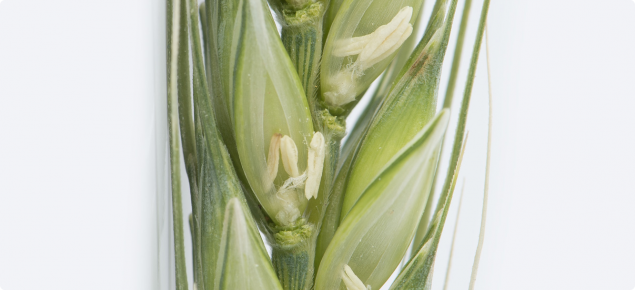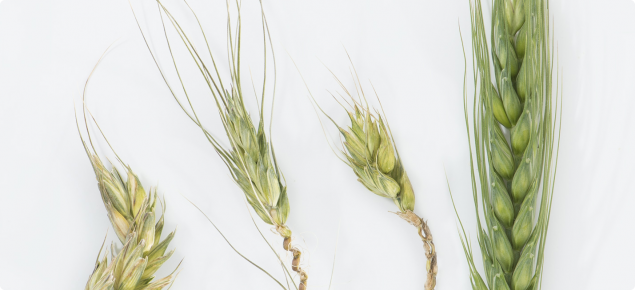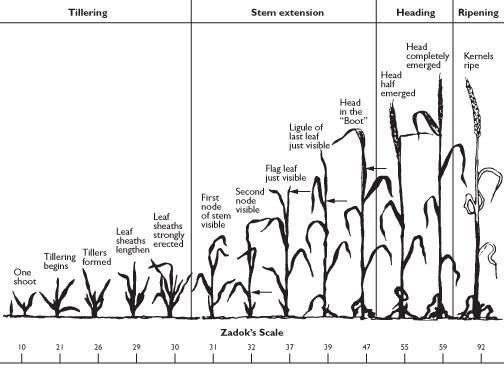Current recommendations are to take advantage of early sowing conditions as sowing early with an optimal variety can lengthen the growing season and deliver increased yields, however this opportunity needs to be carefully managed to minimise the effect of the seasonal constraints such as frost and heat stress that can occur during the flowering window. DPIRD's Wheat Agronomy Team has developed FlowerPower a tool to help farmers work out the best time to sow to reduce frost risk.
Minimising frost risk
All wheat varieties are susceptible to frost where a reproductive frost causes intermittent or partial floret sterility. The sterility is often the combined effect of cold, desiccation and freezing damage to the floral organs and developing grain (Z GS 45–Z71) from minor frosts. This is also referred to as floret, flowering or head frost damage.
Early sowing the correct variety can lengthen the growing season and deliver increased yields. However, when sowing early it is critical to choose a variety with the right flowering behaviour to minimise your frost exposure and maximise your yield potential. Under severe frost (for example -8°C) or multiple minor frosts (several nights of -2°C to -4°C) all varieties included in the National Frost Initiative were all equally susceptible. To minimise the impact of frost;
- Select varieties adapted to your region and then match to the appropriate sowing time to ensure the optimum flowering period.
- Sowing different varieties in order to target the optimum flowering window could minimise the impact of frost. Consider using multiple varieties (with different flowering times and maturities) to target flowering throughout the optimal flowering period for your location.
- The heat and moisture stress associated with delayed sowing can increase grain protein percentage at the cost of grain yield and can produce higher screenings.
Frost damage is accumulative and so managing frost risk is not about avoidance but about maximising production. When sowing early, it is critical to choose a longer season wheat variety that flowers later to minimise exposure to frost.
Through the GRDC National Frost Initiative, Dr Ben Biddulph (DPIRD) compared a range of varieties across a range of sowing times for their response to frost during 2014–17. A key finding was that winter wheats had a flowering advantage when sown in early April. For example, Wylah consistently flowered during the optimal window, the last two weeks of September, from a range of early April sowing dates across several seasons.
Early sowing a variety with the right flowering behaviour delivers higher yields due to the plants increased ability to establish deeper root systems, improved water extraction and greater biomass accumulation. In terms of frost risk the yield potential is protected as flowering occurs within the optimum flowering window.
Winter types can be sown in early April to deliver a yield benefit but this does not apply to long-season or mid-long-season spring types (for example, Magenta, Yitpi, Cutlass), which show a drop in yield due to frost damage when sown early April in frost prone parts of the landscape. These long and mid-long spring types return increased yield from late April sowing to middle of May but the benefit is lost with very early sowing (early to mid April). In frost prone parts of the landscape, Scepter and Mace are best suited to mid to late May sowing.
Variety choice and time of sowing will only form one part of your frost management strategy. Consider pre-season, in-season and post frost event management tactics to customise your management plan.




